Posts tagged autism
Naughty or nice? The Moral Molecule
Jan 9th
Oxytocin (ball-and-stick) bound to its carrier protein neurophysin (ribbons) based on: "Crystal structure of the neurophysin-oxytocin complex" Rose, J.P., Wu, C.K., Hsiao, C.D., Breslow, E., Wang, B.C. (1996) Nat.Struct.Biol. 3: 163-169
I recently enjoyed a truly mind-blowing talk at the New York Academy of Sciences. The Neuroeconomist (yes, he studied Economy and is founding director of Claremont´s Center for Neuroeceonomic Studies) Paul J. Zak spoke about his research on the brain chemical oxytocin (OXT) – the so-called “love hormone” – and how he showed that OXT is the source of love and prosperity, triggering a wide variety of physical and psychological effects More >
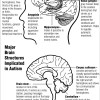
Multiple Paths to Autism
Apr 10th
There was a great deal of excitement last week as intriguing findings published in Nature yield clues into the mystery of autism. Autism, or more correctly put Autism Spectrum Disorders (ASD) are defects in neural development that manifest themselves early in childhood as affected children have difficulties in socialization and language skills. Like any childhood disease autism is unimaginably frustrating for the millions of parents and relatives that have to find the best way to cope with a child who will have unexpected needs. Even more frustrating perhaps is the unanswered questions surrounding the cause of the disease and the More >
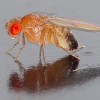
Model Organisms
Oct 12th
I asked a group of 5th graders the other day whether or not we can learn anything from studying other living things. For example, if we mutate or change the DNA of another organism, like fruit flies (D. melanogaster), can we learn anything about what can happen when human DNA changes? For this particular class, it seemed to be an absolutely absurd question. This could have been because the thought of fruit flies made them ill right before lunch, or they were unsure about how much we have in common with fruit flies.
So we got into a discussion about model More >
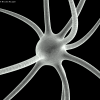
The Firing of Developing Neurons
Feb 18th
At the University of Connecticut Health Center, researchers are now studying the development of neurons and their young firing patterns. It has been discovered that the neurons of fetuses as young as 20 to 21 weeks old fire in patterns that can be seen into adulthood. This is a glimpse into young nerve cells and can serve a basis to understanding what happens when brain development goes wrong.
The neurons fire pulses with periods of rest in between. This is commonly seen in sleeping adults. These pulses were seen between neurons located in the cerebral cortex. The cerebral cortex is involved More >
Autism and Gut Bacteria?
Jun 25th
Here at the DNALC, we work with a lot of bacteria. One bacteria in particular is a harmless strain of E. coli called MM294. This strain, a strain unable to survive outside of its broth and agar domain, is used commonly in our classrooms. As students visit us each year, many have the opportunity to work with the bacteria. Whenever I tell my students that they will be working with E. coli, I tend to be on the receiving end of much criticism.
E. coli gets a bad reputation and I understand that. My students immediately cringe and I know what goes More >

The Autism-Vaccine Link and Trusting Science
Feb 8th
Almost twelve years after its original publication, The Lancet medical journal has formally retracted the infamous paper by Andrew Wakefield and colleagues that had posited a link between vaccines and autism. This follows a partial retraction in 2004, and succeeds the stern judgment by the UK General Medical Council’s Fitness to Practise Panel “that several elements of the 1998 paper by Wakefield et. al. are incorrect, contrary to the findings of an earlier investigation.”
So that finally puts the autism-vaccination link to bed, right? Wrong. To read some responses in the blogosphere, one could assume that The Lancet had declared war on all More >

Remembering Kim Peek
Dec 28th
Kim Peek (November 11, 1951 – December 19, 2009) was an inconceivably gifted savant. In today’s terms we might describe him as a living version of Google, but far better. He could of course, give you driving directions to any place in the country, and open the entire course of human history with names, dates, facts and figures to astonishing accuracy, but he was more than this, he was a person. He was a person doing things that no one would think a person could do, and that is the signature of savantism.
It is important to remember that savantism is More >

Autism and Marijuana
Nov 30th
This morning, “Good Morning America,” a popular morning news program in the U.S. told the story of a mother with an autistic child who was “treating” him with marijuana. I use quotation marks, and will make other cautionary notes here, because this blog is not meant to represent any forum of medical advice.
At the time of writing this, the GMA website, which usually posts follow-ups, has nothing on their site, which I found a little strange. The mother also appeared not with another member of her family, but a lawyer, who was also a family friend. I wondered how these More >
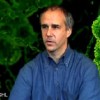
Defining the Enemy, Advances in Autsim Research
Oct 5th
For most people the ideas of genes and traits recall a few scattered facts from their primary schooling on Mendel and his pea plants; short ones, tall ones, Punnett squares and the like. When it comes it comes to simple traits, like eye color, people may think that it is only a matter of some combination of dominant or recessive genes, i.e. BB, Bb, or bb. As it turns out, eye color is more genetically complex than this. So one could imagine that solving the genetic mysteries behind autism are even more complex.
In a recent review of autism research, Brent More >
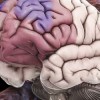
Schizophrenia and Autism – Opposite Ends of the Same Spectrum?
Apr 2nd
Bernard Crespi, an evolutionary geneticist at the Simon Fraser University in Burnaby, Canada, has proposed that schizophrenia and autism are the opposite ends of the same social spectrum. Speaking at the Sackler Colloquium on Evolution in Health and Medicine at the National Academy of Sciences, Crespi noted that copy number variations (CNVs) in the human genome are similar for both schizophrenia and autism. What are CNVs and what evidence is their to support Crespi’s hypothesis?
What are CNVs?
Copy number variations are spontaneous mutations in the genome that result in duplications or deletions of the genomic sequence. Duplications can produce extra More >
